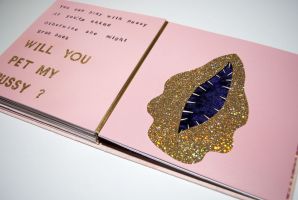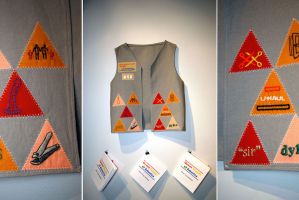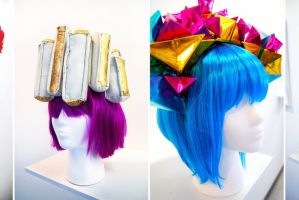- 2-D animation
- 3-D animation
- Abstract
- Abstract Painting
- Alt. process photography
- Animation
- Architect
- Archivist
- Art History
- Arts Writer
- BFA
- Blacksmith
- Book arts
- Book Illustration
- Branding
- Calligraphy
- Caricature
- Carpentry
- Ceramic
- Collaborative/collective
- Collage
- Color Photography
- Comics
- Commercial Photography
- Commission
- Community art
- Concept Art
- Conceptual
- Construction
- Copy photography
- Curator
- Development
- Digital 3-D modeling
- Digital Fabrication
- Digital Media
- Digital Photography
- Documentary
- Eco-Art
- Editor
- Editorial photography
- Engraving
- Etching
- Event photography
- Fab Lab
- Fashion
- Feminist
- Fiber
- Fiber Art
- Figure
- Film
- Film Photography
- Freelance
- Furniture Design
- Gallerist
- Game developer
- Garments
- Gender
- Goldsmith
- Graphic design
- Health and medical
- Home furnishing
- Identity Design
- Illustration
- Installation
- Interactive
- Interior Design
- Interior Painting
- Jewelry
- Kinetic
- Landscape
- Landscape Architect
- Lettering
- Letterpress
- Logo Design
- Master Printer
- Mechanical drawing
- Metal Fabrication
- Metalsmithing
- MFA
- Miniature
- Model
- Model maker
- Monotype
- Mural
- Mural Artist
- Music
- Packaging Design
- Painting
- Performance art
- Photography
- Porcelain
- Portrait
- Portraiture
- Preparator/ Art Handler
- Printmaking
- Product Design
- Public Art
- Public Engagement
- Representational
- Restoration
- Robotics
- Screenprinting
- Sculptor
- Sculpture
- Sign painter
- Social media
- Social Practice
- Soft Sculpture
- Stone
- Stop Motion Animation
- Street Art
- Surface Design
- Teaching artist
- Textile
- UI Design
- Video
- Visual Identity
- Web Design
- Wedding photography
- Window display
- Woodcut
- Woodworking
- Writer
Selves-ies
Connect me with Shelby Wynne Richardson

Description
��?Selves-ies� depict Richardson in highly saturated colors and close proximity. Existing as both digitally rendered prints and digitally accessed imagery (such as a smartphone or laptop), Richardson capitalizes on the technological era of pseudo-voyeurism and the aesthetic of the ��?Instagram model�. Wigs, costume changes, facial expressions, and props all become part of this ��?selfie� performance in which the line between collective self and actual self is intentionally blurred and exploited. However, there is an interesting dichotomy and politicality that occurs with the self portrait. The attitude surrounding selfie culture, something mostly female driven, mocks and belittles the act as something of either pure narcissism or insecurity. And yet the male artist has been depicting himself for centuries. Female subjectivity, and therefore lesbian subjectivity, is a cultural activity that is continually devalued through its consumption by the male audience, and therefore unable to be rendered as a culturally important artifact.
Richardson��?s Selves-ies series may not be seen as highly political on first glance. These over performed and colorful images could have been ripped directly from an Instagram feed. But there is a type of subversion occurring here through the co-opting of this visual language and the insertion of one��?s self into male-created culture. It is both an act of self preservation and resistance. Certain lesbian theorists suggest that a women��?s culture does not exist in male dominant societies, for gender identity and sexual desires are patriarchally constructed. This means that supposedly female culture is only created as a response to or for the sake of a male dominated society. Therefore, when the female body performs only for the sake of oneself or the sake of another female there is a disconnect and therefore a resistance to this power structure enacted by heteronormative culture. These images do not exist on an Instagram feed, searching for likes and male approval. They were not crafted with a heteronormative agenda in mind. They exist only in the spaces created by Richardson and presented only for her own personal satisfaction.





